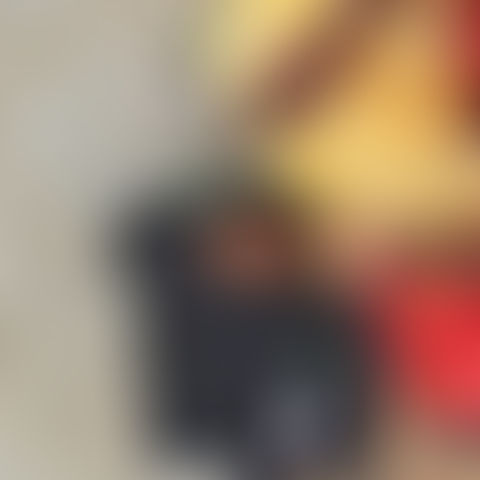Projects
Rajasthan, Sindh and Gujarat: desert based crafts from India and Pakistan, gets made into two foliage-rich botanical typefaces: Barmer Katab (patchwork) and Phool-Patti (appliqué)
An oasis in the desert in the form of these foliage-rich appliqué and patchwork based typefaces
Region: Gogaji ki Khejadi, Barmer, Rajasthan, India
We worked with crafts women in the Thar Desert of Rajasthan to create two foliage rich typefaces that belie the barren desert and instead highlight the vibrancy of the people — Barmer Katab, in the form of a reverse appliqué and patchwork and Phool-Patti is done just in reverse appliqué .
The art of appliqué & cut work involves the drawing a design on thin transparent sheets and then tinching them (putting a series of dots in the sheet). A white paste (in this case made with toothpaste!) is passed through the dots onto the main fabric (made of cambric). Following this, the design is cut with a chisel and hammer and then pasted onto the base organdy (in this case white colored) cloth. After the glue (also a home-made concoction) dries up, the top fabric can be folded in and stitched and the process of applique can begin.
Typecraft is not just about the Design of Fonts. Community building and knowledge is a vital aspect of Typecraft.
Typecraft Design Methodology Workshop
We usually start all our workshops using simple and available materials such as paper and processes that match the craft — in this case cutting paper was the most appropriate way to learn and explore forms. Till now, the craftswomen we worked with had never created forms and designs on their own — they were usually given the design and then asked to stitch it.
As a warm-up exercise, the craftswomen started to freely cut-up old newspapers — as a way to “sketch” and explore simple forms, initially and then with time more complex forms, and eventually in the course of the next couple of days, some of them graduated to making letters in the form of paper cuts. The presence of symmetry inherent in capitalized Latin letterforms makes them ideal for appliqué and paper-cuts. Some women made geometric cuts in the letters, but more skilled craftswomen like Nirmala could also make curved and non-geometric designs in the letters.
Typically patterns are created by a masterji — a male figure — and then the cut cloth is given to the women to sew. This meant, that over time, the women were excluded from the skill-intensive processes of appliqué and patchwork. We used the workshop to also encourage the craftswomen to learn the various skills needed for all the stages of appliqué and patchwork — design, tinching, cutting, pasting and folding/stitching. An introduction to folding and cutting was delivered by Kastura-Ram Pataliya showing samples of his work, along with inputs from our team.
Since participants were not familiar with the Latin alphabet, a series of cards with Latin letters were delivered as a helpful aid to understand the shapes. It supposed a real challenge for them, furthermore a way to learn the alphabet, too. This sketching and ‘learning by doing’ process of work came up with interesting results by the second day of the workshop which were collected for further consideration. Letter forms belonging to the English Alphabet were shared to make them understand the aim of the workshop. Small cards with the alphabet are made and these were passed around amongst the women.Meanwhile the pattern cutter Kastura Ram was taking initiative to come up with letterforms —based on the tree of life organic design — on his own.
While the women were busy getting a sense of how shapes emerge through the cut work, we also started to learn about Barmer appliqué by studying motifs such as the iconic tree of life, the prince and princess and other patterns and designs. We also tried to understand the various stages in the making process.
It was encouraging to see that in the group of fifteen, while all but one of the women were illiterate, —
over the course of the next few days as they continued to cut letters everyday and all day — many women (and their children, some of whom didn't go to school) were able to recognise the shape of the alphabets and in some cases, even how to write their own names.
We also found that only Kastura Ram and his daughter, Nirmala were very knowledgeable about all the stages of appliqué. We facilitated them to impart their knowledge and skills to the other craftswomen despite their hesitance to share their expertise.
This, we felt was vital not only for equal benefit to the community but for the sake of efficiency of this and future projects. Typecraft is not only about the creation of fonts, moreover it is about sharing your expertise in type and design with a craft community but also inculcating a spirit of sharing and collaboration. Additionally, we called out the names of all the women one by one — selecting a design they had done as something that we felt could work — as a way to acknowledge and validate their contribution.
Understanding the difference between Patchwork and Appliqué techniques helped to understand the two different approaches that were used for the design of letters. A first test was made with letter K using a shape nicely cut by Kastura-Ram’s daughter.
Credits
Craftspersons - Chunni, Shanti, Tibu, Pawani, Paami, Bhaami, Mangi, Khetu, Anita, Nirmala, Shanti. Jasoda, Chandi and Kastura Ram
Designer and Craft Co-ordinator - Andreu Balius, Ishan Khosla
Type Development - Andreu Balius, Ishan Khosla, Ricard Garcia
Project Supported by - Rangsutra
Local NGO - Roshni














































